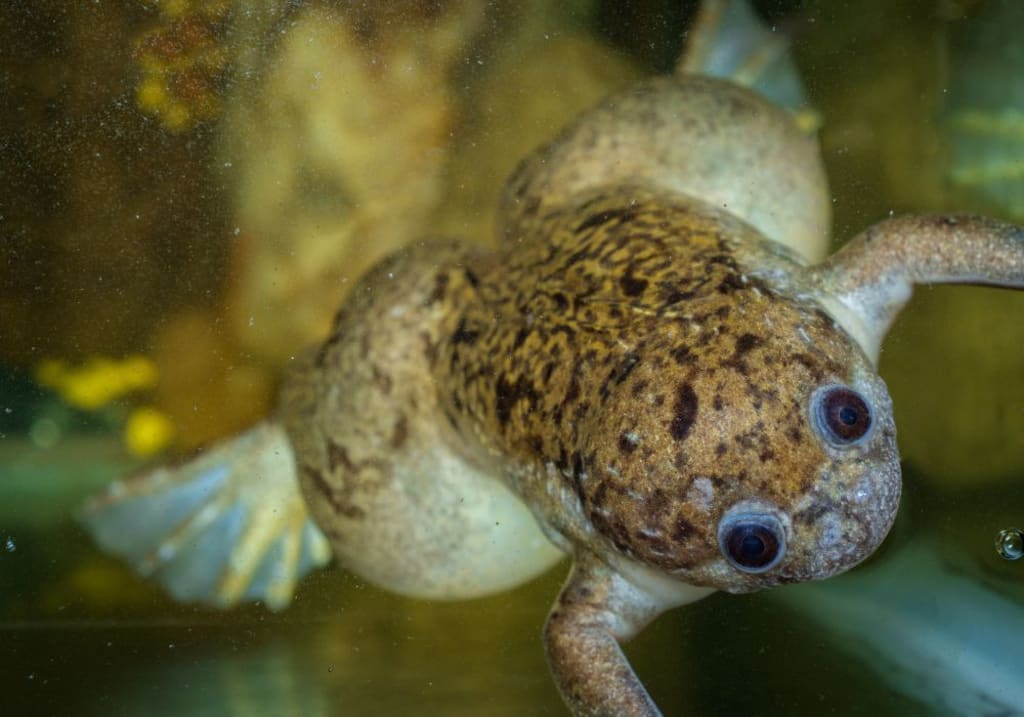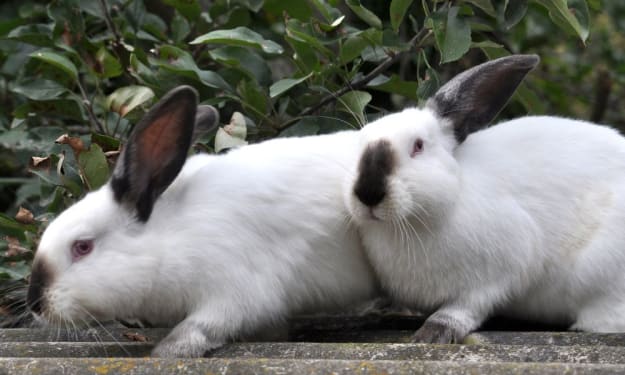
Frogs can be fascinating and rewarding pets, especially for beginners who are interested in amphibians. They come in various sizes, colors, and temperaments, making it possible to find a frog that suits your lifestyle and experience level. In this comprehensive guide, we will explore some of the best pet frogs for beginners, their care requirements, and tips for setting up and maintaining their habitats.
Understanding Frog Care Basics
Before diving into specific frog species, it's important to understand the basic care requirements for pet frogs. Frogs can be relatively easy to care for, but they do have specific needs that must be met to ensure their health and well-being.
Habitat
Frogs require a suitable habitat that mimics their natural environment. This includes:
- Terrarium: A glass or plastic enclosure with a secure lid.
- Substrate: Suitable bedding material such as coconut fiber, sphagnum moss, or reptile carpet.
- Temperature: A heat source to maintain the appropriate temperature range for your frog species.
- Humidity: A way to maintain the appropriate humidity level, such as a misting system or a water dish.
- Hiding Places: Plants, logs, or other hiding spots to provide security and reduce stress.
- Water Source: A shallow water dish or pool for soaking and maintaining hydration.
Diet
Most pet frogs are insectivores, meaning they primarily eat insects. A balanced diet for frogs typically includes:
- Crickets: A staple food for many frog species.
- Mealworms and Waxworms: Occasional treats to add variety.
- Supplementation: Calcium and vitamin supplements to ensure proper nutrition.
Handling
Frogs generally do not enjoy being handled frequently. Handling should be minimized to reduce stress and the risk of injury or infection. When handling is necessary, always wash your hands before and after to protect both you and your frog.
Top Pet Frogs for Beginners
1. African Dwarf Frog
The African Dwarf Frog is a popular choice for beginners due to its small size, ease of care, and aquatic nature. These frogs are fully aquatic and do not require a land area in their habitat.
Characteristics:
- Size: 1.5 to 2 inches
- Lifespan: 5 to 10 years
- Diet: Small live or frozen foods such as bloodworms and brine shrimp
Habitat: Fully aquatic with a water heater to maintain a temperature between 72-78°F
Why They’re Suitable: African Dwarf Frogs are easy to care for and can be kept in a small aquarium. They are active and interesting to watch, making them a great choice for beginners.
2. White's Tree Frog (Dumpy Tree Frog)
White's Tree Frogs are known for their docile nature and ease of care. They are relatively hardy and can tolerate a range of conditions, which makes them ideal for beginners.
Characteristics:
- Size: 3 to 4.5 inches
- Lifespan: 10 to 15 years
- Diet: Crickets, mealworms, and other insects
- Habitat: Terrarium with both land and water areas, temperature between 75-85°F
Why They’re Suitable: White's Tree Frogs are forgiving of minor care mistakes and have a calm demeanor. They are also known for their charming appearance and vocalizations.
3. Pacman Frog (Horned Frog)
Pacman Frogs are named for their large mouths and voracious appetites. They are a terrestrial species that require a simple setup and are relatively easy to care for.
Characteristics:
- Size: 4 to 7 inches
- Lifespan: 6 to 10 years
- Diet: Insects, small rodents, and other prey items
- Habitat: Terrarium with a moist substrate, temperature between 75-85°F
Why They’re Suitable: Pacman Frogs are low-maintenance and do not require a large enclosure. They are also visually striking with their bright colors and patterns.
4. American Green Tree Frog
American Green Tree Frogs are small, vibrant, and easy to care for. They are a great option for beginners who want a visually appealing and active pet.
Characteristics:
- Size: 1.5 to 2.5 inches
- Lifespan: 5 to 6 years
- Diet: Small insects such as crickets and fruit flies
- Habitat: Vertical terrarium with plants and branches, temperature between 70-80°F
Why They’re Suitable: American Green Tree Frogs are hardy and can thrive in a variety of conditions. Their bright green color and active nature make them a delightful addition to any home.
5. Fire-Bellied Toad
Fire-Bellied Toads are known for their striking coloration and semi-aquatic lifestyle. They are relatively easy to care for and make an excellent choice for beginners.
Characteristics:
- Size: 2 to 2.5 inches
- Lifespan: 10 to 15 years
- Diet: Small insects such as crickets and mealworms
- Habitat: Semi-aquatic setup with both land and water areas, temperature between 70-75°F
Why They’re Suitable: Fire-Bellied Toads are visually appealing with their bright green and black backs and fiery red bellies. They are also hardy and can tolerate a range of conditions.
6. Tomato Frog
Tomato Frogs are named for their bright red or orange coloration. They are a terrestrial species that is easy to care for and suitable for beginners.
Characteristics:
- Size: 2.5 to 4 inches
- Lifespan: 6 to 8 years
- Diet: Insects such as crickets and mealworms
- Habitat: Terrarium with a moist substrate, temperature between 70-80°F
Why They’re Suitable: Tomato Frogs are relatively low-maintenance and do not require a large enclosure. Their vibrant color and calm demeanor make them an attractive pet for beginners.
Setting Up Your Frog’s Habitat
Creating a suitable habitat is crucial for the health and well-being of your pet frog. Here are some general guidelines for setting up a frog habitat.
Terrarium Size
The size of the terrarium will depend on the species of frog you choose. As a general rule:
- Small Frogs (under 3 inches): 10-gallon tank minimum
- Medium Frogs (3-6 inches): 20-gallon tank minimum
- Large Frogs (over 6 inches): 30-gallon tank minimum
- Substrate
Choose a substrate that is appropriate for your frog species. Common substrates include:
- Coconut Fiber: Suitable for most terrestrial and semi-aquatic frogs.
- Sphagnum Moss: Good for maintaining humidity.
- Reptile Carpet: Easy to clean and suitable for some species.
Temperature and Humidity
Use a thermometer and hygrometer to monitor the temperature and humidity levels in your frog’s habitat. Adjustments may include:
Heat Lamps or Mats: To maintain the appropriate temperature range.
Misting Systems or Water Dishes: To maintain humidity levels.
Lighting
Frogs do not require UVB lighting, but a light cycle that mimics natural day and night cycles is beneficial. Use a timer to ensure consistent lighting.
Decor and Hiding Places
Provide plants, logs, and other decor to create hiding places and climbing opportunities. This helps reduce stress and provides enrichment.
Water Source
Ensure your frog has access to clean, dechlorinated water. For aquatic species, maintain water quality with regular water changes and filtration.
Feeding Your Pet Frog
Feeding your frog a balanced diet is essential for its health. Here are some tips for feeding:
Insects
- Crickets are a staple food for most frog species. Other insects include:
- Mealworms and Waxworms: Occasional treats.
- Fruit Flies: Suitable for smaller frogs.
Supplements
Dust insects with calcium and vitamin supplements to prevent deficiencies. Follow a schedule based on your frog’s species and age.
Handling and Interaction
Minimize handling to reduce stress and the risk of injury or infection. When handling is necessary:
- Wash Hands: Before and after handling to protect both you and your frog.
- Gentle Handling: Support the frog’s body and avoid squeezing.
Conclusion
Choosing the right pet frog is crucial for a positive and rewarding experience. African Dwarf Frogs, White's Tree Frogs, Pacman Frogs, American Green Tree Frogs, Fire-Bellied Toads, and Tomato Frogs are all excellent choices for beginners due to their ease of care and fascinating behaviors. By providing the appropriate habitat, diet, and care, you can enjoy the companionship of these unique and captivating amphibians. Remember, each species has its own specific needs, so take the time to research and understand the requirements of your chosen frog to ensure a happy and healthy pet.
About the Creator
Hasan
Welcome...
In this site of mine you can learn amazing things and many information that you don't know so please subscribe to my site.
Enjoyed the story? Support the Creator.
Subscribe for free to receive all their stories in your feed. You could also pledge your support or give them a one-off tip, letting them know you appreciate their work.






Comments
There are no comments for this story
Be the first to respond and start the conversation.